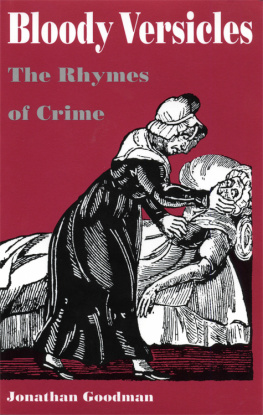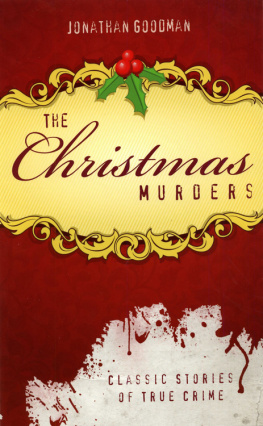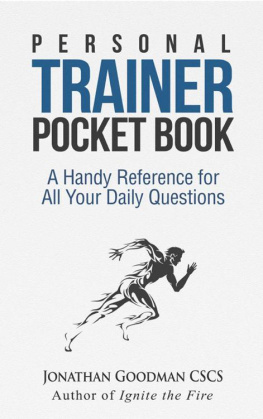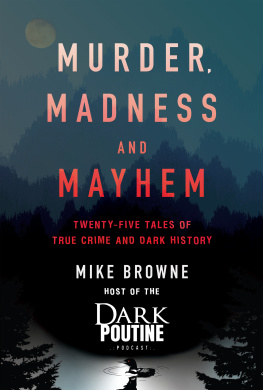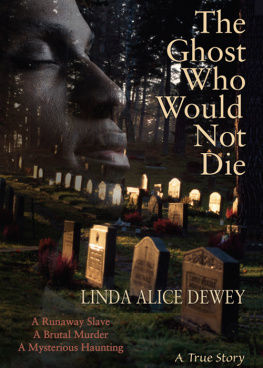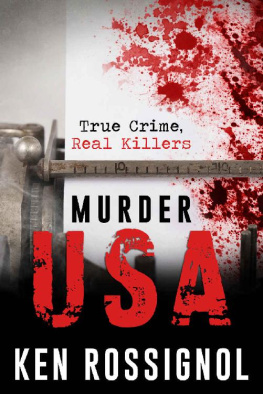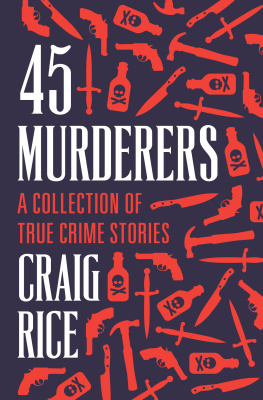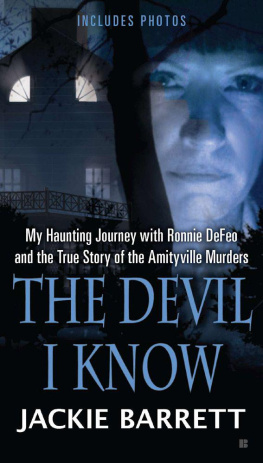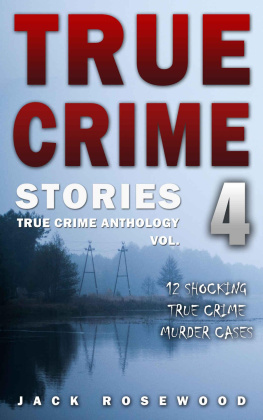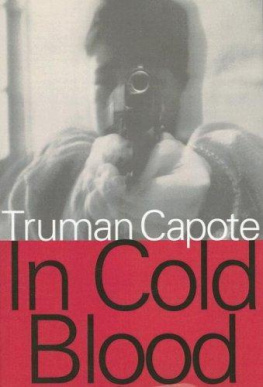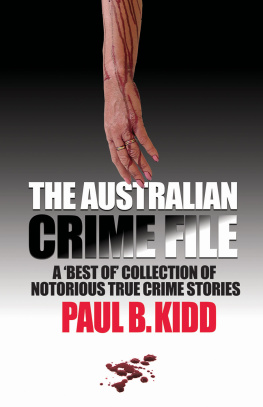
TRUE CRIME HISTORY SERIES
Twilight of Innocence: The Disappearance of Beverly Potts
James Jessen Badal
Tracks to Murder
Jonathan Goodman
Terrorism for Self-Glorification: The Herostratos Syndrome
Albert Borowitz
Ripperology: A Study of the Worlds First Serial Killer and a
Literary Phenomenon
Robin Odell
The Good-bye Door: The Incredible True Story of Americas First
Female Serial Killer to Die in the Chair
Diana Britt Franklin
Murder on Several Occasions
Jonathan Goodman
The Murder of Mary Bean and Other Stories
Elizabeth A. De Wolfe
Lethal Witness: Sir Bernard Spilsbury, Honorary Pathologist
Andrew Rose
Murder of a Journalist: The True Story of the Death of
Donald Ring Mellett
Thomas Crowl
Musical Mysteries: From Mozart to John Lennon
Albert Borowitz
The Adventuress: Murder, Blackmail, and Confidence Games in the
Gilded Age
Virginia A. McConnell
Queen Victorias Stalker: The Strange Case of the Boy Jones
Jan Bondeson
Born to Lose: Stanley B. Hoss and the Crime Spree That
Gripped a Nation
James G. Hollock
Murder and Martial Justice: Spying, Terrorism, and Retribution
in Wartime America
Meredith Lentz Adams
The Christmas Murders: Classic True Crime Stories
Edited by Jonathan Goodman
The Supernatural Murders: Classic True Crime Stories
Edited by Jonathan Goodman
2011 by the Estate of Jonathan Goodman
All rights reserved
First published in 1992 by
Judy Piatkus (Publishers) Ltd., London
Library of Congress Catalog Card Number 2011003224
ISBN 978-1-60635-083-6
Manufactured in the United States of America
Library of Congress Cataloging-in-Publication Data
The supernatural murders : classic true crime stories / edited
by Jonathan Goodman.
p. cm. (True crime history series)
ISBN 978-1-60635-083-6 (pbk. : alk. paper) 1. OccultismHistory.
2. MurderHistory. I. Goodman, Jonathan.
BF1439.S87 2011
364.1523dc22
2011003224
British Library Cataloging-in-Publication data are available.
15 14 13 12 11 5 4 3 2 1
For Jean Bloomfield,
the weird lady,
with love
Contents
Preface
Albert Borowitz
A Slaying on Saint Valentines Day
Ivan Butler
The Widow of Hardscrabble
Albert Borowitz
Prophesies of Doom
Bram Stoker
The Well and the Dream
Richard Whittington-Egan
An Astrological Postscript
William Henry
Calling Madame Isherwood
Edmund Pearson
A Surfeit of Spirits
Jonathan Goodman (compiler)
Amityville Revisited
Jeffrey Bloomfield
The Ghost of Sergeant Davies
William Roughead
Devils in the Flesh
Rayner Heppenstall
The Hand of God or Somebody
Jonathan Goodman
Defending the Witch-Burners
Edmund Pearson
The Trial of Susanna Martin
Cotton Mather
The Protracted Murder of Gregory Rasputin
Lady Lucy Wingfield
The Gutteridge Murder
W. Teignmouth Shore
JONATHAN GOODMAN was determined to make The Supernatural Murders the spookiest of his true crime anthologies; he selected accounts of killings that were certainly or possibly sparked off by diverse beliefs about unearthly power on earth or that were certainly or possibly brought to light by perhaps transcendent means or that either gave rise to superstitions or legends, or acted as reminders, revivers, of old ones. It should be noted that Goodman, ordinarily one of the most precise of crime historians, sounds consistently a note of doubt or ambiguity. Certainly or possibly, he suggests twice, and adds perhaps, emphasizing the vagueness that is often at the very core of the supernatural.
If Goodmans introduction did not advise them otherwise, readers who are not already familiar with his other collections might be inclined to believe that his inclusion of thirteen articles in The Supernatural Murders was intended as a reference to one of our most popular superstitions. Goodman observes that his habit of choosing thirteen cases for each anthology was actually established much earlier in his career.
The Supernatural Murders begins with A Slaying on Saint Valentines Day, briefly relating the killing of a farm laborer, Charles Walton, on Valentines Day 1945 in an area of Warwickshire famous for witchcraft. A celebrated detective, Fabian of the Yard (Detective Inspector, later Superintendent Robert Fabian), believed that a farmer, Albert Potter, killed Walton when pressed for payment of a debt and then embellished his crime with counterfeit presentments of witchery.
In 1924 and 1925, a serial poisoner, Martha Wise, devastated the ranks of her family in rural Medina County, near Cleveland, Ohio. My article, The Widow of Hardscrabble, quotes Wise as having told a reporter in a prison interview that her crimes were instigated by the devil. However, after her conviction, she blamed the poisoning scheme on her lover.
From the pages of Bram Stoker, author of Dracula, Goodman culls Prophesies of Doom, an account of the murderous exploits of Madame Voisin in seventeenth-century Frances Age of Arsenic. La Voisins originality lay in her combining skills in two specialties: fortune-telling and toxicology. She developed an uncanny knack for predicting with accuracy the longevity of unwanted husbands, and for making her prognostications come true.
The discovery through a dream vision of the actual location of a corpse was a remarkable feature of the famous murder of Maria Marten in Polstead, England. However, since that case had been included in The Country House Murders, Goodman selected for the present volume Richard Whittington-Egans The Well and the Dream, a lesser-known example of the dreaming mind as sleuth. In 1922 Eric Tombe went missing. Night after night his sleeping mother saw her sons dead body lying at the bottom of a well, and she brought her fears to the sympathetic attention of Superintendent Francis Carlin, one of Scotland Yards Big Four. The police dug out disused wells at the burnt farmhouse of Eric Tombes crooked partner, Ernest Dyer, and confirmed the accuracy of Mrs. Tombes dreams by finding her sons body. Since Dyer had previously been killed in an arrest for an unrelated crime, the murder case remains unsolved. Goodman adds An Astrological Postscript, by William Henry, who finds Dyers guilt consistent with the planets.
One of Americas most celebrated true crime writers of the twentieth century, Edmund Pearson, is represented by two short articles in contrasting moods. Calling Madame Isherwood recalls a moment of priceless wit in a prosecutors cross-examination of a practicing medium who had taken the stand, so she said, only after being authorized to do so by the spirit of a murder victim. What kind of a spirit was it? the prosecutor asked. A plump spirit, above five feet high? The argument of Pearsons second piece, Defending the Witch-Burners, is advanced in earnest that we cannot afford to say much about the Salem witches if we chance to live where the custom of lynching Negroes, often innocent Negroes, is extenuated today. (Goodman appends Cotton Mathers account of the Salem witchcraft trial of Susanna Martin.)
Goodman contributes two excellent pieces to the collection. The first, A Surfeit of Spirits, is his compilation of records and press clippings concerning an epidemic of ghost sightings in early nineteenth-century Hammersmith that terminated in a homicide. Francis Smith, in nocturnal pursuit of a reported spectre, shot to death the white-clad Thomas Milyard, who failed to respond when challenged. After he was convicted of murder, Smiths death sentence was commuted to a years imprisonment. Goodman supplies a happy, though fictional, ending.



